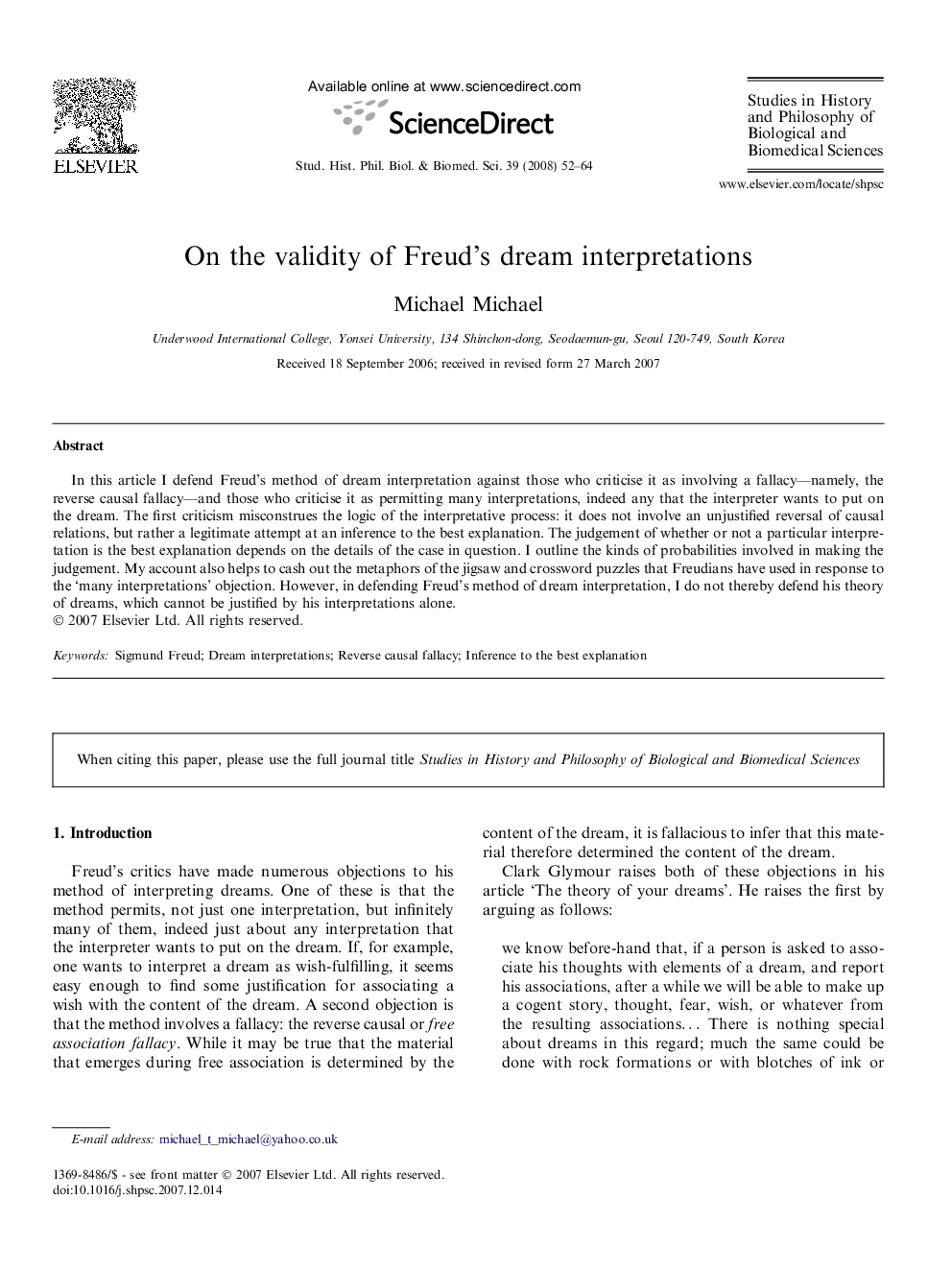| Article ID | Journal | Published Year | Pages | File Type |
|---|---|---|---|---|
| 1161892 | Studies in History and Philosophy of Science Part C: Studies in History and Philosophy of Biological and Biomedical Sciences | 2008 | 13 Pages |
In this article I defend Freud’s method of dream interpretation against those who criticise it as involving a fallacy—namely, the reverse causal fallacy—and those who criticise it as permitting many interpretations, indeed any that the interpreter wants to put on the dream. The first criticism misconstrues the logic of the interpretative process: it does not involve an unjustified reversal of causal relations, but rather a legitimate attempt at an inference to the best explanation. The judgement of whether or not a particular interpretation is the best explanation depends on the details of the case in question. I outline the kinds of probabilities involved in making the judgement. My account also helps to cash out the metaphors of the jigsaw and crossword puzzles that Freudians have used in response to the ‘many interpretations’ objection. However, in defending Freud’s method of dream interpretation, I do not thereby defend his theory of dreams, which cannot be justified by his interpretations alone.
